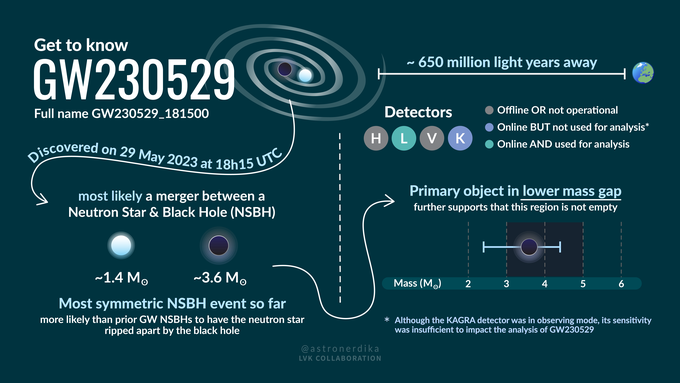In May 2023, shortly after the start of the fourth LIGO-Virgo-KAGRA observing run, the LIGO Livingston detector observed a gravitational-wave signal from the collision of what is most likely a neutron star with a compact object that is 2.5 to 4.5 times the mass of our Sun. Neutron stars and black holes are both compact objects, the dense remnants of massive stellar explosions. What makes this signal, called GW230529, intriguing is the mass of the heavier object. It falls within a possible mass-gap between the heaviest known neutron stars and the lightest black holes. The gravitational-wave signal alone cannot reveal the nature of this object. Future detections of similar events, especially those accompanied by bursts of electromagnetic radiation, could hold the key to solving this cosmic mystery.
GW data-analysis and astrophysics of neutron stars and other compact objects, like black holes is the main focus of CAMK's LVK group. The LVK collaboration is represented at CAMK by Michal Bejger, Pawel Ciecielag, Przemyslaw Figura, Brynmore Haskell, Mateusz Pietrzak, Mariusz Suchenek, Sudhagar Suyamprakasam, Nikesh Yadav.







